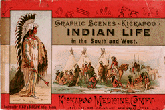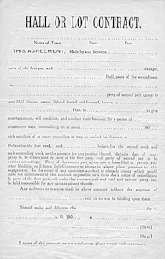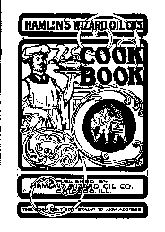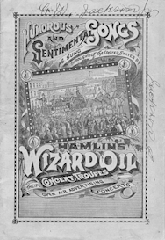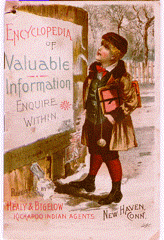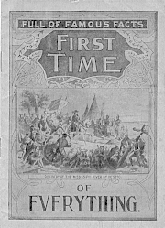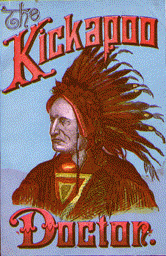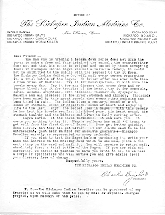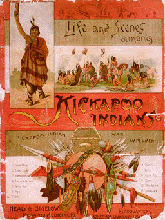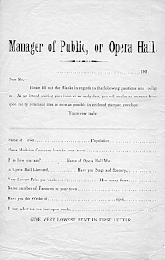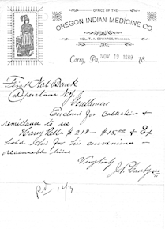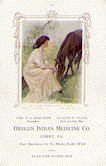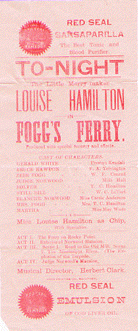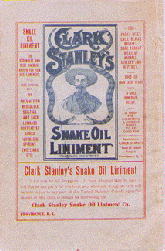
Medical Show
The American medicine show had its origins in the performances put on by traveling charlatans as early as the fourteenth century in Europe. American shows were structured around entertainers who could be expected to draw a crowd who would listen to, and then undoubtedly purchase, the medicines offered by the "doctor" who made two or three sales pitches a night. A great deal of ephemera is associated with the medicine show - tickets of admission, broadsides advertising the place and time of the show, forms for proprietors to book halls or hotels for their troupes, songsters for the audience to join in singing with the entertainers, advertising booklets, etc. The major firms which used the medicine show as a vehicle for their promotions, exemplified by the Kickapoo Indian Medicine Company (headquartered in New Haven, Connecticut, far from any nineteenth century center of Indian population) published a variety of booklets and other advertisements to promote their products independently of the medicine show; not surprisingly, such publications usually had something to do with American Indian life or lore.
Kickapoo Indian Medicine Co.,
Indian Life in the South and West,
24 page pamphlet,
New Haven, Connecticut, 1887,
11.5 x 17.3 cm.
Hamlin's Wizard Oil Co.,
Wizard Oil, Humorous and Sentimental Songs,
32 page pamphlet,
Chicago, c. 1900,
19.1 x 13.3 cm.
Kickapoo Indian Medicine Co.,
Encyclopedia of Valuable Information,
32 page pamphlet,
New Haven, Connecticut, c.1894,
16.6 x 11 cm.
Kickapoo Indian Medicine Co.,
First Time,
32 page pamphlet,
New Haven, Connecticut, c. 1900,
17.5 x 12.6 cm.
Kickapoo Indian Medicine Co.,
The Kickapoo Doctor,
32 page pamphlet, illus.,
New Haven, Connecticut, c. 1890,
19.8 x 13.7 cm.
Kickapoo Indian Medicine Co.,
Life and Scenes among the Kickapoo Indians,
176 page book, illus.,
New Haven, Connecticut, c. 1900,
24 x 17.5 cm.
Kickapoo Indian Medicine Co.,
A Mine of Health,
broadside,
New Haven, Connecticut, c. 1920,
27.8 x 20.3 cm.
Last Reviewed: January 25, 2024


